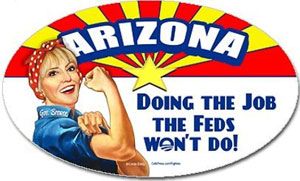Ed Morrissey
HotAir.com
11/4/2010
Well, the media is calling it “quantitative easing” again, or “QE2″ for short, but that’s what it is, isn’t it? The Fed will print about $600 billion in order to buy Treasury bonds to keep interest rates from going too high. They want to force some inflation to get people holding capital to start spending it, while still not having a plan to unload the assets they bought during QE1:
The plan to pump $600 billion into the financial system is designed to stimulate the economy in large part by lowering mortgage and other interest rates.
Although the approach carries significant risks for both the economy and the central bank’s credibility, the steps announced by Fed policymakers could represent the nation’s best hope for breaking free of sluggish growth, especially with bold initiatives unlikely from a newly divided Congress.
Fed officials concluded that growth is too slow to bring down the 9.6 percent unemployment rate and is at risk of staying that way for some time absent new action. They were also concerned that inflation has been running too low and were looking for a way to encourage modest price increases, which would give consumers and businesses more reason to spend money before its value declined and help energize the economy. …
The Fed usually manages the economy by adjusting short-term interest rates. With those rates already near zero, Fed officials had to dust off a strategy for boosting the economy that debuted during the darkest days of the financial crisis. The Fed plans to create money, essentially out of thin air, and then pump it into the economy by buying Treasury bonds on the open market. These purchases are to be finished by the end of June, the Fed said.
Using this technique, called “quantitative easing,” the Fed bought more than $1.7 trillion in securities during the financial crisis and in its immediate aftermath. The central bank’s holdings jumped to their current level of $2.3 trillion, and the figure will approach $3 trillion when the new purchases are complete. This new wave of bond buying is a dramatic turnabout for an institution that just six months ago, amid a false spring in the economy, was weighing how it would begin unloading all the securities it had purchased.
This looks like a solution for the wrong problem. The problem isn’t a lack of capital for investment, it’s the uncertainty of the economic and especially regulatory environment. Creating a little inflation won’t overcome that; it’s more likely to increase the uncertainty…
The rest of the article is at HotAir.com







